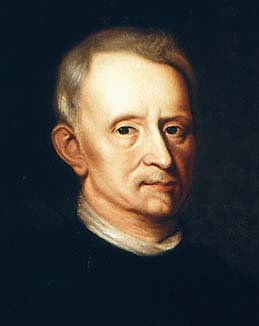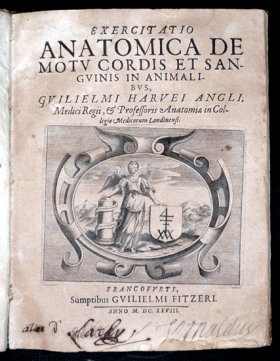Louis Pasteur (1822-1895)
Seung Yon Rhee
 Line drawing of Louis Pasteur drawn by | If one were to choose among the greatest benefactors of humanity, Louis Pasteur would certainly rank at the top. He solved the mysteries of rabies, anthrax, chicken cholera, and silkworm diseases, and contributed to the development of the first vaccines. He debunked the widely accepted myth of spontaneous generation, thereby setting the stage for modern biology and biochemistry. He described the scientific basis for fermentation, wine-making, and the brewing of beer. Pasteur's work gave birth to many branches of science, and he was singlehandedly responsible for some of the most important theoretical concepts and practical applications of modern science. Pasteur's achievements seem wildly diverse at first glance, but a more in-depth look at the evolution of his career indicates that there is a logical order to his discoveries. He is revered for possessing the most important qualities of a scientist: the ability to survey all the known data and link the data for all possible hypotheses, the patience and drive to conduct experiments under strictly controlled conditions, and the brilliance to uncover the road to the solution from the results. On the discipline of rigid and strict experimental tests he commented, "Imagination should give wings to our thoughts but we always need decisive experimental proof, and when the moment comes to draw conclusions and to interpret the gathered observations, imagination must be checked and documented by the factual results of the experiment."
|
The pattern of logic in Pasteur's scientific career and the brilliance of his experimental method are well documented. It all started from studying crystal structure. As a student at the Ecole Normale, Pasteur observed that the organic compound tartrate, when synthesized in a laboratory, was optically inactive (unable to rotate the plane of polarized light), unlike the tartrate from grapes, because the synthetic tartrate is composed of two optically asymmetric crystals. With careful experimentation, he succeeded in separating the asymmetric crystals from each other and showed that each recovered optical activity. He then hypothesized that this molecular asymmetry is one of the mechanisms of life. In other words, living organisms only produce molecules that are of one specific orientation, and these molecules are always optically active.
This hypothesis was tested again by utilizing a synthetic tartrate solution that had been contaminated with mold. He found that this solution became more optically active with time and concluded that the mold was only utilizing one of the two crystals. Later in his career, he was approached with a contamination problem in alcoholic fermentation, which was thought to be an entirely chemical process at the time. After careful examination, he found that the fermenting solution contained optically active compounds and concluded that fermentation was a biological process carried out by microorganisms. This hypothesis, called the germ theory, was followed by many elegant experiments that showed unequivocally the existence of microorganisms and their effect on fermentation.
The germ theory was the foundation of numerous applications, such as the large scale brewing of beer, wine-making, pasteurization, and antiseptic operations. Another significant discovery facilitated by the germ theory was the nature of contagious diseases. Pasteur's intuited that if germs were the cause of fermentation, they could just as well be the cause of contagious diseases. This proved to be true for many diseases such as potato blight, silkworm diseases, and anthrax. After studying the characteristics of germs and viruses that caused diseases, he and others found that laboratory manipulations of the infectious agents can be used to immunize people and animals. The discovery that the rabies virus had a lag-time before inducing disease prompted the studies of post-infection treatment with weakened viruses. This treatment proved to work and has saved countless lives.
All of these achievements point to singular brilliance and perseverance in Pasteur's nature. His work served as the springboard for branches of science and medicine such as stereochemistry, microbiology, bacteriology, virology, immunology, and molecular biology. Moreover, his work has protected millions of people from disease through vaccination and pasteurization.
Robert Hooke (1635-1703)

Harvey, William (1578–1657)
 |
 |
| Title page of Harvey's Exercitatio anatomica de motu cordis et sanguinis in animalibus Credit: Indiana University |
His career
William Harvey was born in Folkestone, a town on the south coast of England. He was educated at Canterbury Grammar School and at Caius College, Cambridge, where he obtained his B.A., then went to Padua, Italy, to study medicine. His coat of arms is still displayed in the entrance hall of the University of Padua, a tribute to one of that institution's greatest pupils. In 1607 he was admitted to the Royal College of Physicians in London, and two years later was appointed to the post of physician to St. Bartholomew's Hospital.
In 1616 Harvey began a course of lectures in which he first expressed his views on the movements of the heartarteries and veins. It was not until 1628, however, that he published the work which made him famous: the Exercitatio anatomica de motu cordis et sanguinis in animalibus. The whole was in Latin, as was custom at that time. Translated, the title is: "Anatomical treatise on the motion of the heart and blood in animals".
Harvey was a man of great energy and ability and the leading physician of his day. He was physician by royal appointment to two English kings, James I and Charles I, and he attended the ill-fated Charles at the Battle of Edgehill in 1642. In 1651, towards the end of his life, he published another work, Exercitationes de generatione
Harvey's ideas on blood circulation
Until the 16th century ideas about the movements of the blood in the living body were extremely vague. It was known that the blood was not stagnant, but it was supposed to ebb and flow in the veins and arteries, preserving no particular direction. The prevailing theories were based on those of the Greek physician Galen, who lived in the second century and of the blood contained in it and in the (Studies on reproduction). Although longer than the treatise on circulation it is not regarded of equal importance as a contribution to science, though it is a record of an immense amount of detailed observation. AD. Some advance was made shortly before Harvey's time, mainly in Italy.
Harvey's teacher at Padua, Fabricius of Aquapendente, demonstrated the presence of valves in the veins, which seemed to indicate that the blood must flow in one direction. It was also recognized that blood must circulate in the body, but it remained for Harvey to explain fully the mechanism by which it does so.
The heart is divided into four chambers: a right and left atrium and a right and a left ventricle. The ventricles are thick-walled and muscular and each one is connected by an opening with the atrium on its own side but is divided from its fellow ventricle by a wall or septum; the two atria are similarly divided from each other. Blood enters the atria by veins and is pumped out of the ventricles through arteries. Having circulated in the body, blood enters the right atrium and then passes into the right ventricle, which contracts and forces it along an artery to the lungs. There it receives oxygen and returns by a vein to the left atrium, passes into the left ventricle and is pumped into a large artery from which it circulates in the body. Having lost its oxygen it comes back to the right atrium and goes all the way around again.
It was this mechanism which was expounded by Harvey in his treatise, and it was a thing wholly new to the science of medicine and anatomy. In his researches on the subject he carried out many dissections of dead and living animals, including dogs, pigs, and even such creatures as lobsters, shrimp, and slugs. Of course, he made human dissections as well.
In one respect his work was incomplete: he failed to show how the blood in the body passes from the arterial system back to the venous system. It was the Italian anatomist Marcello Malpighi who, by his discovery of the capillary blood vessels, cleared this point up only four years after Harvey's death.
-------------------------------------

No comments:
Post a Comment